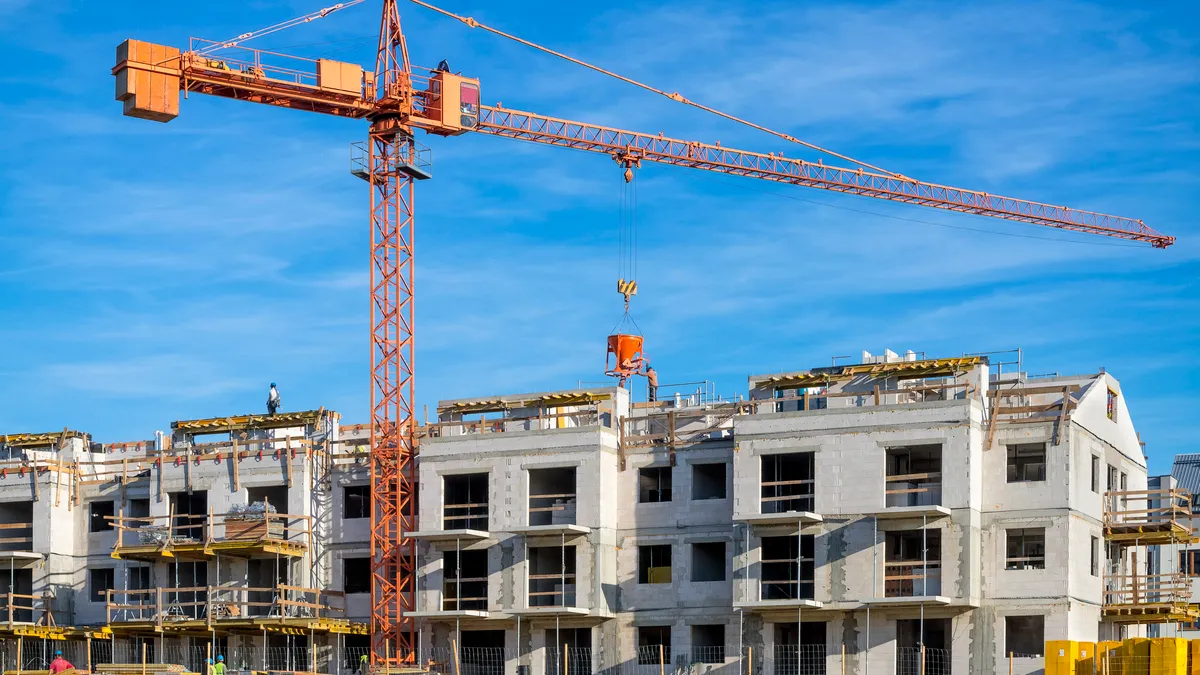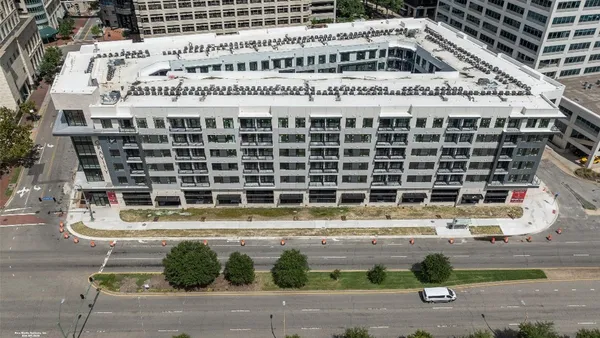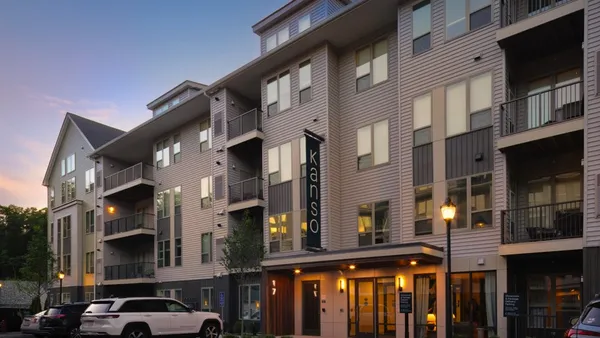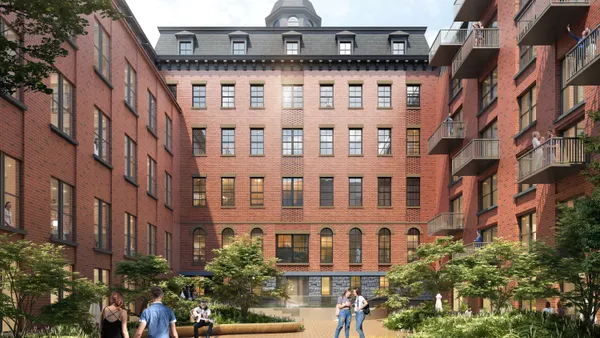Dive Brief:
- The national average multifamily rent remained unchanged in January at $1,710, following five months of negative growth, according to Yardi Matrix’s latest Multifamily National Report. Year-over-year rent growth rose slightly, up 10 basis points to 0.5%, but remains close to record lows.
- Rent growth is expected to remain weak through the rest of 2024 due to high deliveries. Roughly 500,000 new units came online in 2023, and another 540,000 are expected in 2024. However, new supply is expected to wane after that, owing to the drop in starts brought on by high-interest rates.
- At the national level, demand remains strong after hitting record highs in 2021, driven by job growth, wage increases and rising immigration to places like New York and Chicago. According to a recent Congressional Budget Office report cited by Yardi, immigration totaled 3.3 million in 2023, a significant rebound from previous years.
Dive Insight:
Neither rent growth nor new deliveries are spread evenly across the country, according to Yardi. High-growth, high-demand secondary and tertiary markets in the West and the Sun Belt are seeing the most new supply, including Huntsville, Alabama; Colorado Springs, Colorado; Boise, Idaho; Austin, Texas; Miami; Denver; Phoenix and Nashville, Tennessee. Austin has the sharpest YOY rent decline out of Yardi’s top 30 at -6.0%, while Orlando, Florida, and Phoenix have both fallen more than 3.0%.
The Northeast and Midwest are seeing weaker demand, more stable occupancy, a slower pipeline of new supply and rising rents. New York City leads the nation in rent growth at 5.5%, followed by neighboring New Jersey at 4.4%.
| Market | YOY rent growth, January 2024 | YOY rent growth, December 2023 | Difference |
|---|---|---|---|
| New York City | 5.5% | 5.9% | -0.4 |
| New Jersey | 4.4% | 4.2% | 0.2 |
| Columbus, Ohio | 4.2% | 3.8% | 0.4 |
| Kansas City, Missouri | 3.4% | 3.3% | 0.1 |
| Indianapolis | 3.0% | 2.4% | 0.6 |
| Chicago | 2.9% | 3.1% | -0.2 |
| Boston | 2.6% | 3.0% | -0.4 |
| Twin Cities | 2.1% | 1.4% | 0.7 |
| Washington, D.C. | 1.9% | 1.6% | 0.3 |
| Philadelphia | 1.5% | 2.0% | -0.5 |
SOURCE: Yardi Matrix
Two sectors where new starts remain strong despite headwinds are affordable housing and build-to-rent properties.
“Although both affordable housing and [single-family rental] starts fell somewhat in 2023 coming off record 2022 numbers, construction in both segments is well above previous years,” the report reads. “Affordable housing starts totaled 67,000 in 2023… more than three times the totals in 2013 and 2014. Similarly, starts of SFR communities with 50-plus units reached 32,600 in 2022, a tenfold increase from 2013 and 2014.”











